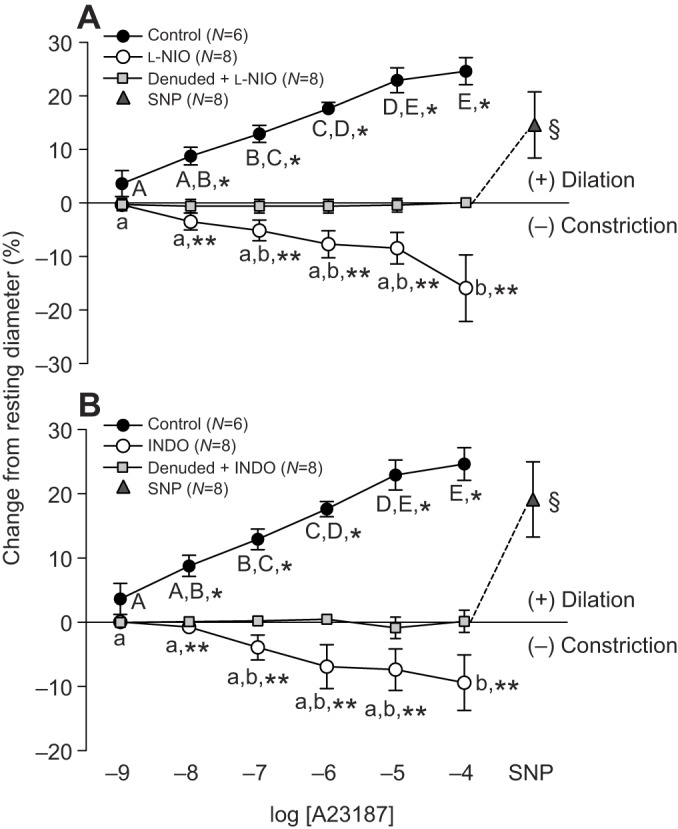Fig. 4.

Effect of l-NIO and indomethacin on trout coronary microvessel dilation induced by the calcium ionophore A23187. Vessel denudation was achieved by exposing the intraluminal surface of the vessel to the non-ionic detergent CHAPS (0.4%). Vessels were incubated for 30 min with either the NOS inhibitor L-NIO (10−4 mol l−1) (A) or the COX inhibitor INDO (10−4 mol l−1) (B), before A23187 injections were initiated. Dissimilar capital letters indicate significant (P<0.05) differences in the response to the various concentrations of A23187 in control (intact) vessels, while dissimilar lower case letters indicate differences in the response to A23187 in vessels incubated with either L-NIO (A) or INDO (B). To improve clarity of the figure, letters are not included where differences were not significant. Significant differences between control (intact) and denuded vessels are indicated by *, while ** indicates significant differences between vessels in the presence (open circles) versus absence (filled circles) of blocker (i.e. l-NIO or INDO) at a particular concentration of A23187 (P<0.05). Sodium nitroprusside (SNP, 10−4 mol l−1) was administered at the end of each trial to test for vascular smooth muscle viability in denuded vessels, and § indicates a significant difference between denuded microvessels after exposure to 10−4 mol l−1 A23187 versus after SNP injection. Note that a series of sham saline (containing ethanol) injections did not result in a noticeable (i.e. ≤0.5%) change in vessel ID. Thus, we considered any change in vessel ID greater than 2% (the mean change plus 2 s.d. caused by the sham saline injections) to be biologically significant. All concentrations are in mol l−1.
